Saad Bin Abul Kashem
BIO-CXRNET: A Robust Multimodal Stacking Machine Learning Technique for Mortality Risk Prediction of COVID-19 Patients using Chest X-Ray Images and Clinical Data
Jun 15, 2022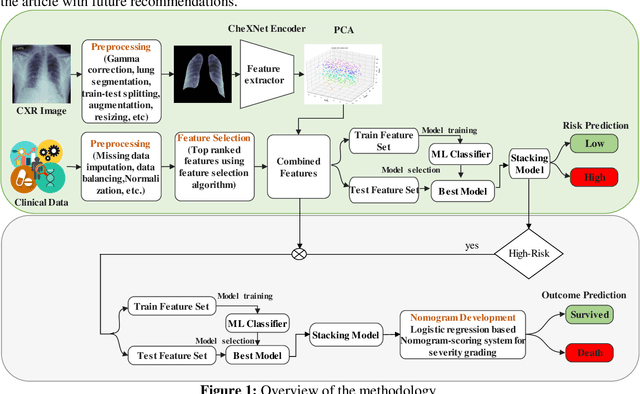
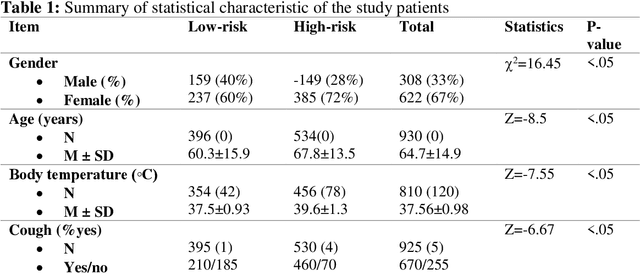
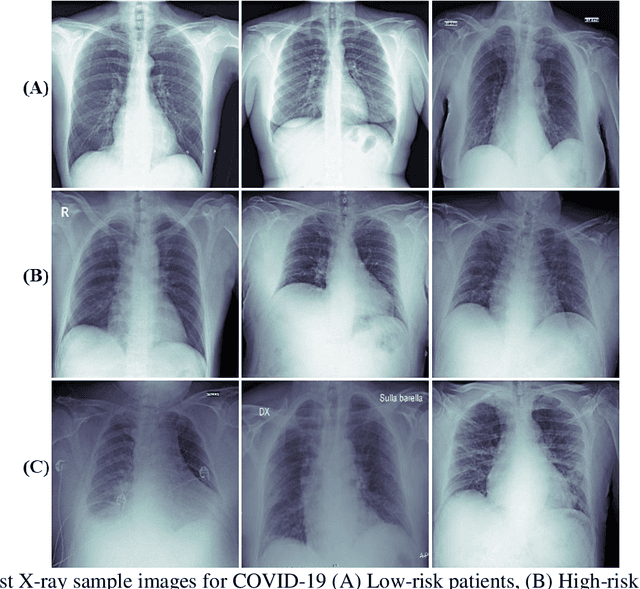

Abstract:Fast and accurate detection of the disease can significantly help in reducing the strain on the healthcare facility of any country to reduce the mortality during any pandemic. The goal of this work is to create a multimodal system using a novel machine learning framework that uses both Chest X-ray (CXR) images and clinical data to predict severity in COVID-19 patients. In addition, the study presents a nomogram-based scoring technique for predicting the likelihood of death in high-risk patients. This study uses 25 biomarkers and CXR images in predicting the risk in 930 COVID-19 patients admitted during the first wave of COVID-19 (March-June 2020) in Italy. The proposed multimodal stacking technique produced the precision, sensitivity, and F1-score, of 89.03%, 90.44%, and 89.03%, respectively to identify low or high-risk patients. This multimodal approach improved the accuracy by 6% in comparison to the CXR image or clinical data alone. Finally, nomogram scoring system using multivariate logistic regression -- was used to stratify the mortality risk among the high-risk patients identified in the first stage. Lactate Dehydrogenase (LDH), O2 percentage, White Blood Cells (WBC) Count, Age, and C-reactive protein (CRP) were identified as useful predictor using random forest feature selection model. Five predictors parameters and a CXR image based nomogram score was developed for quantifying the probability of death and categorizing them into two risk groups: survived (<50%), and death (>=50%), respectively. The multi-modal technique was able to predict the death probability of high-risk patients with an F1 score of 92.88 %. The area under the curves for the development and validation cohorts are 0.981 and 0.939, respectively.
Exploring the Effect of Image Enhancement Techniques on COVID-19 Detection using Chest X-rays Images
Nov 25, 2020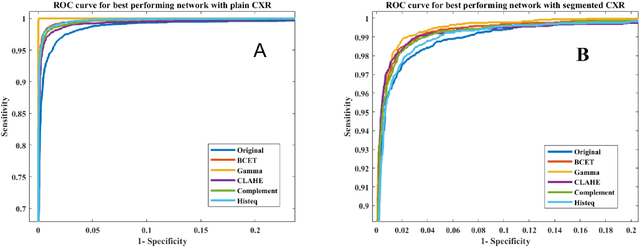
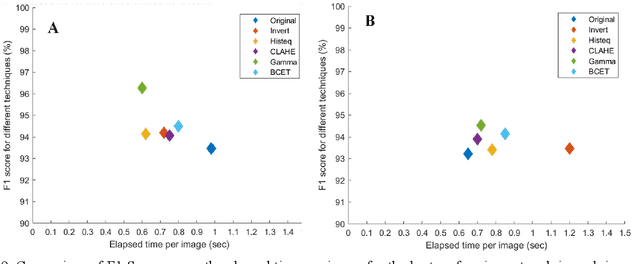
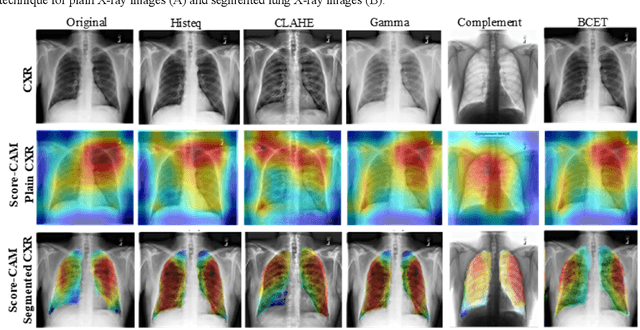
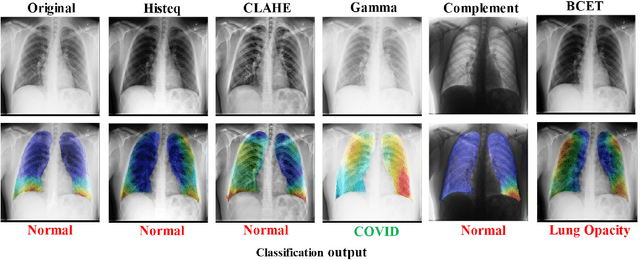
Abstract:The use of computer-aided diagnosis in the reliable and fast detection of coronavirus disease (COVID-19) has become a necessity to prevent the spread of the virus during the pandemic to ease the burden on the medical infrastructure. Chest X-ray (CXR) imaging has several advantages over other imaging techniques as it is cheap, easily accessible, fast and portable. This paper explores the effect of various popular image enhancement techniques and states the effect of each of them on the detection performance. We have compiled the largest X-ray dataset called COVQU-20, consisting of 18,479 normal, non-COVID lung opacity and COVID-19 CXR images. To the best of our knowledge, this is the largest public COVID positive database. Ground glass opacity is the common symptom reported in COVID-19 pneumonia patients and so a mixture of 3616 COVID-19, 6012 non-COVID lung opacity, and 8851 normal chest X-ray images were used to create this dataset. Five different image enhancement techniques: histogram equalization, contrast limited adaptive histogram equalization, image complement, gamma correction, and Balance Contrast Enhancement Technique were used to improve COVID-19 detection accuracy. Six different Convolutional Neural Networks (CNNs) were investigated in this study. Gamma correction technique outperforms other enhancement techniques in detecting COVID-19 from standard and segmented lung CXR images. The accuracy, precision, sensitivity, f1-score, and specificity in the detection of COVID-19 with gamma correction on CXR images were 96.29%, 96.28%, 96.29%, 96.28% and 96.27% respectively. The accuracy, precision, sensitivity, F1-score, and specificity were 95.11 %, 94.55 %, 94.56 %, 94.53 % and 95.59 % respectively for segmented lung images. The proposed approach with very high and comparable performance will boost the fast and robust COVID-19 detection using chest X-ray images.
 Add to Chrome
Add to Chrome Add to Firefox
Add to Firefox Add to Edge
Add to Edge